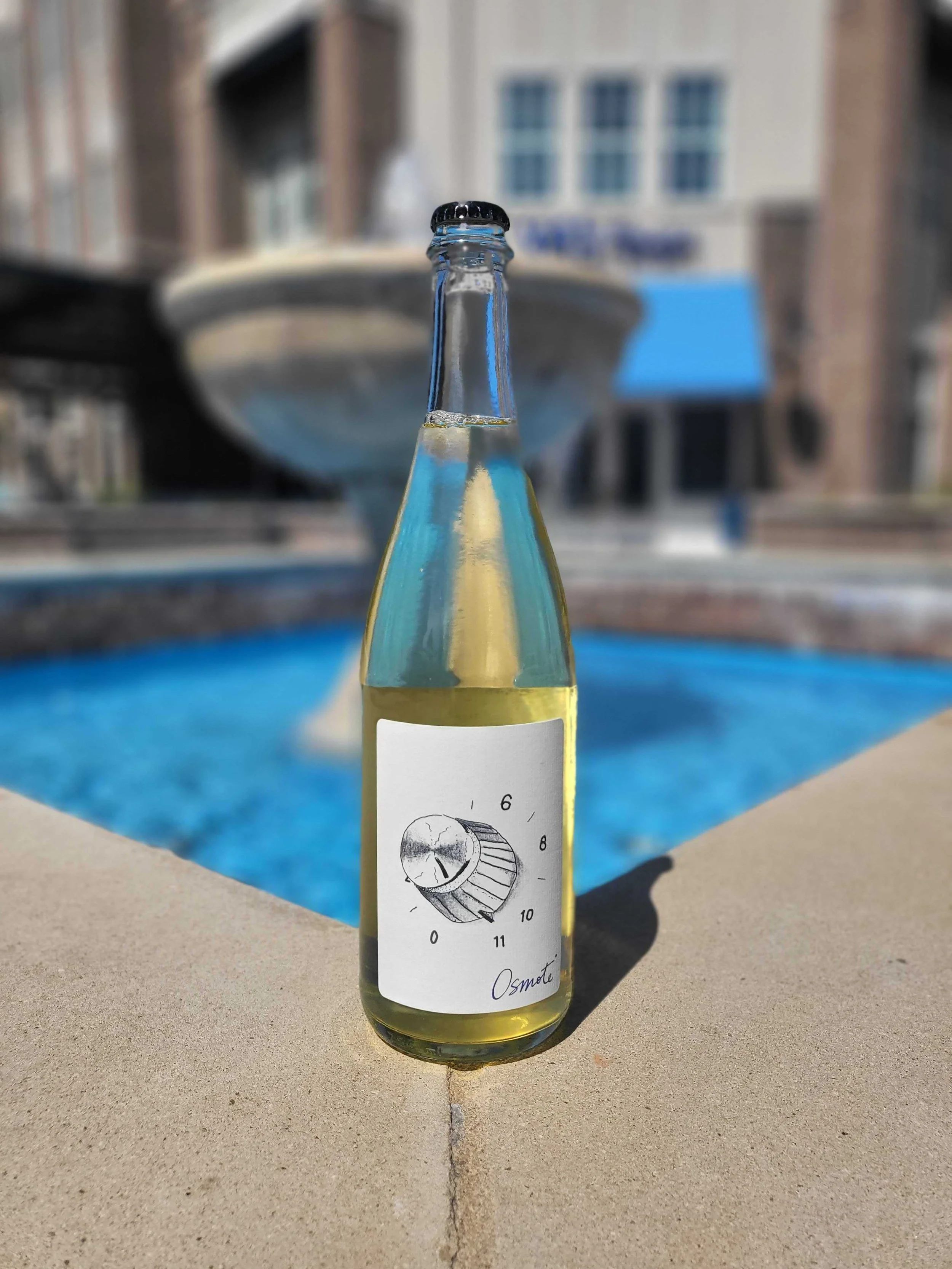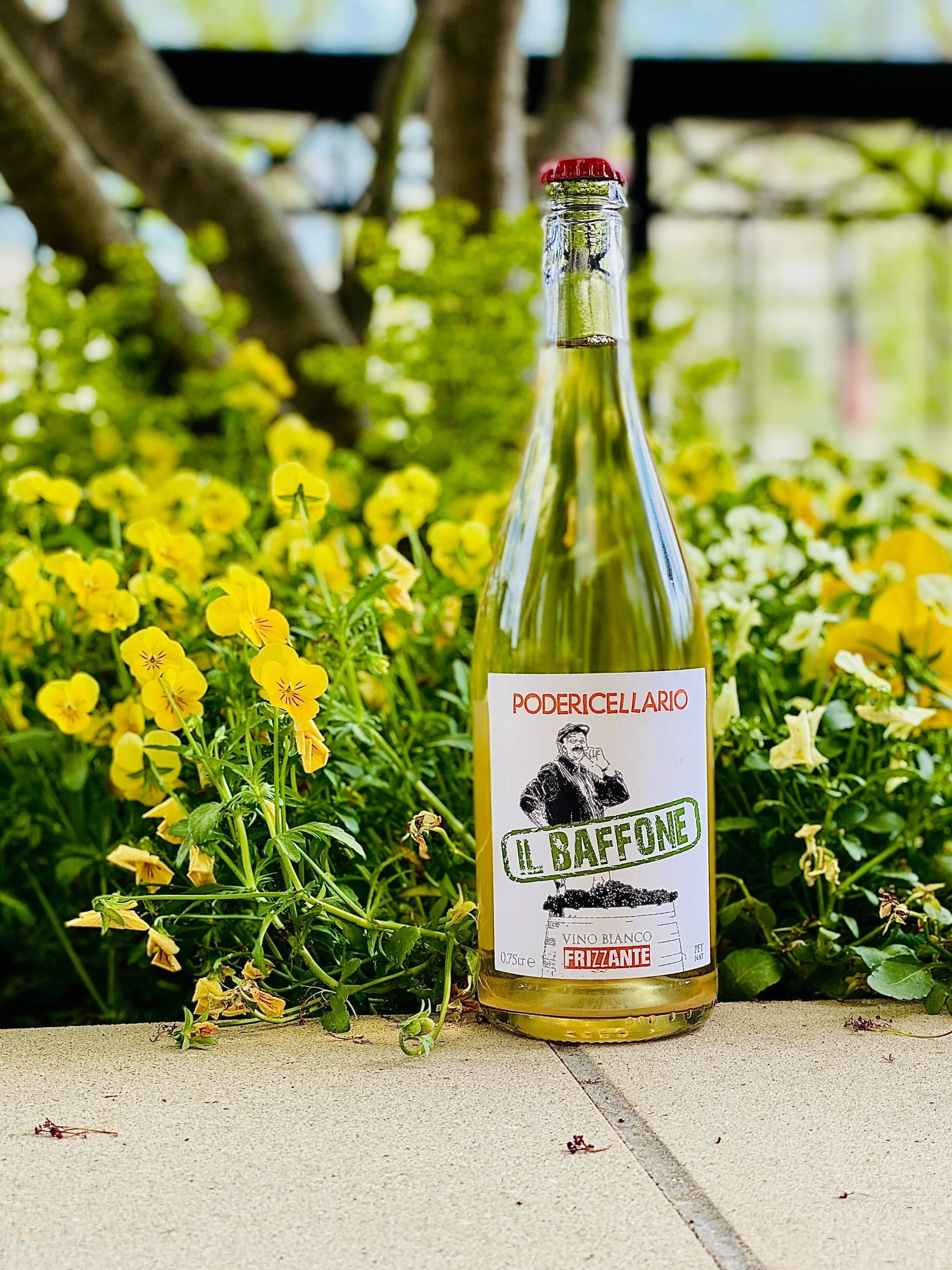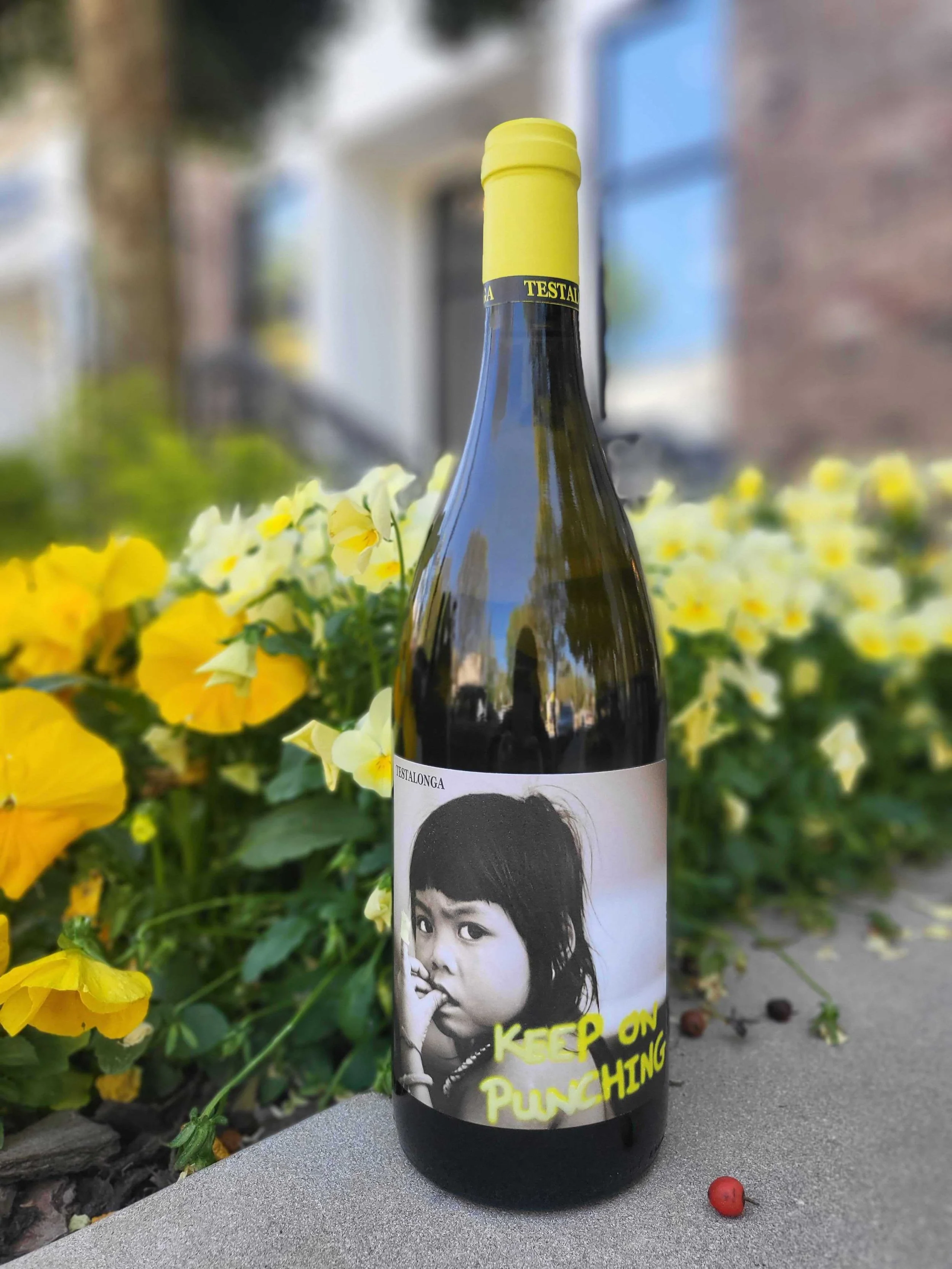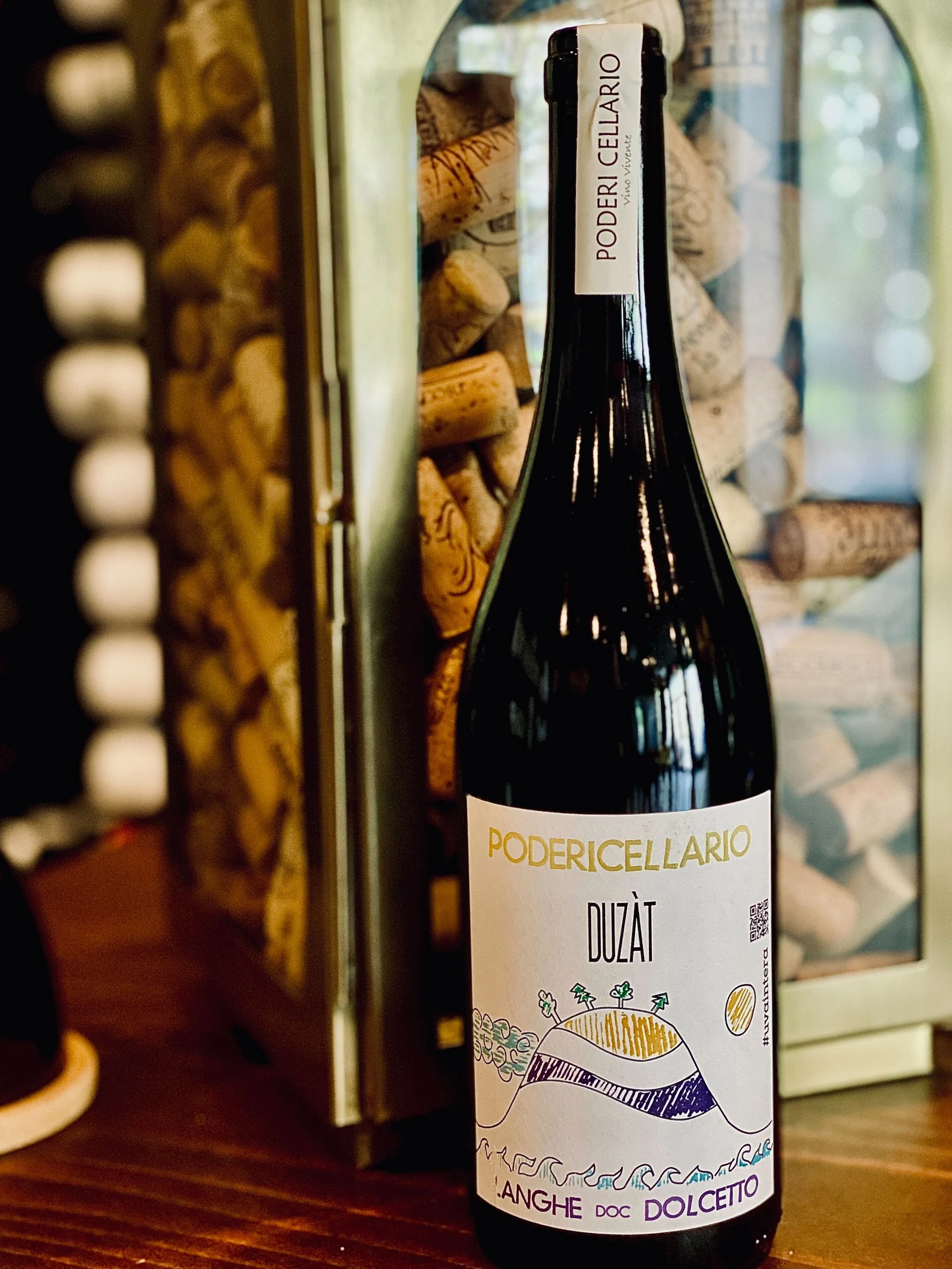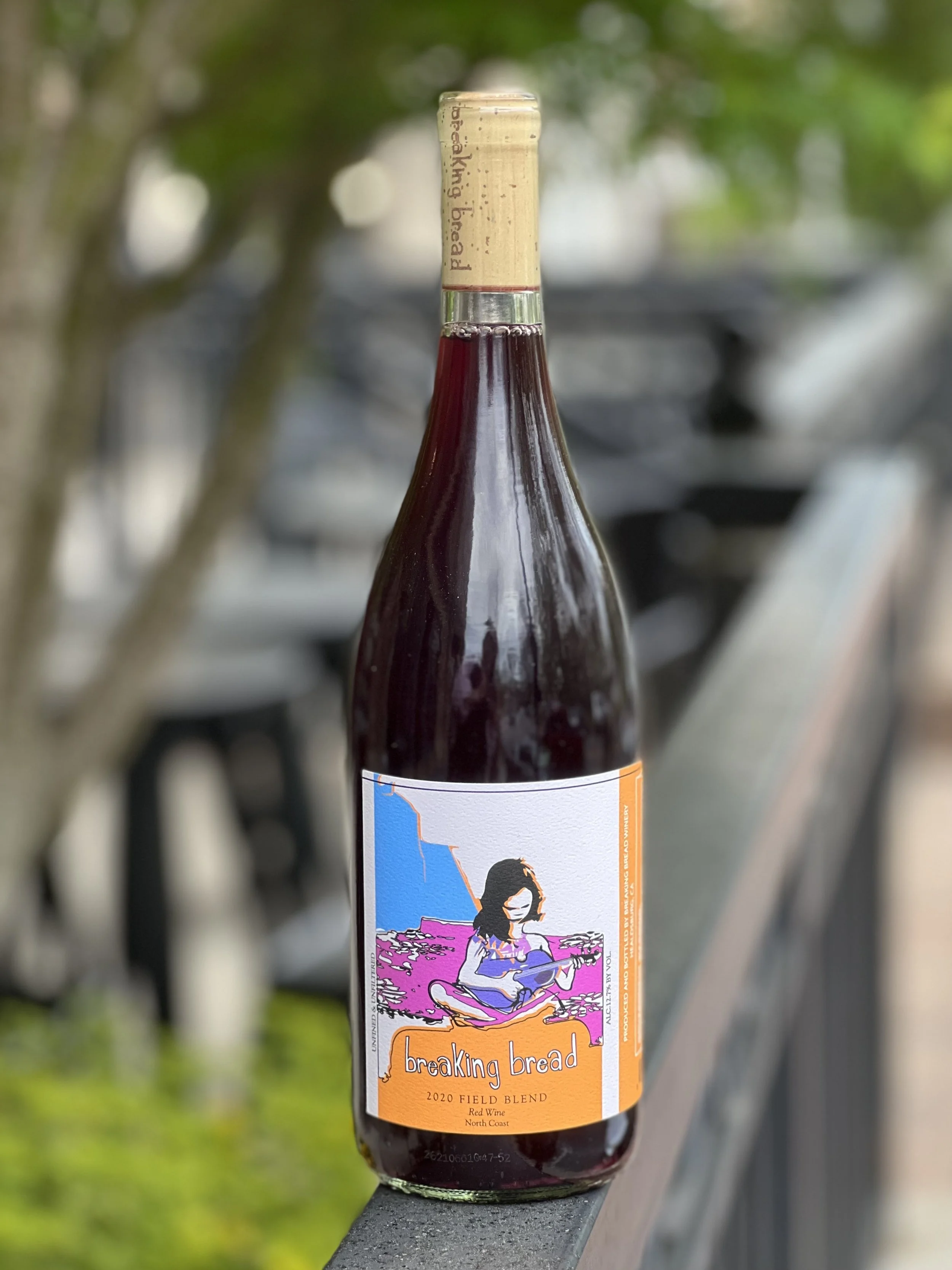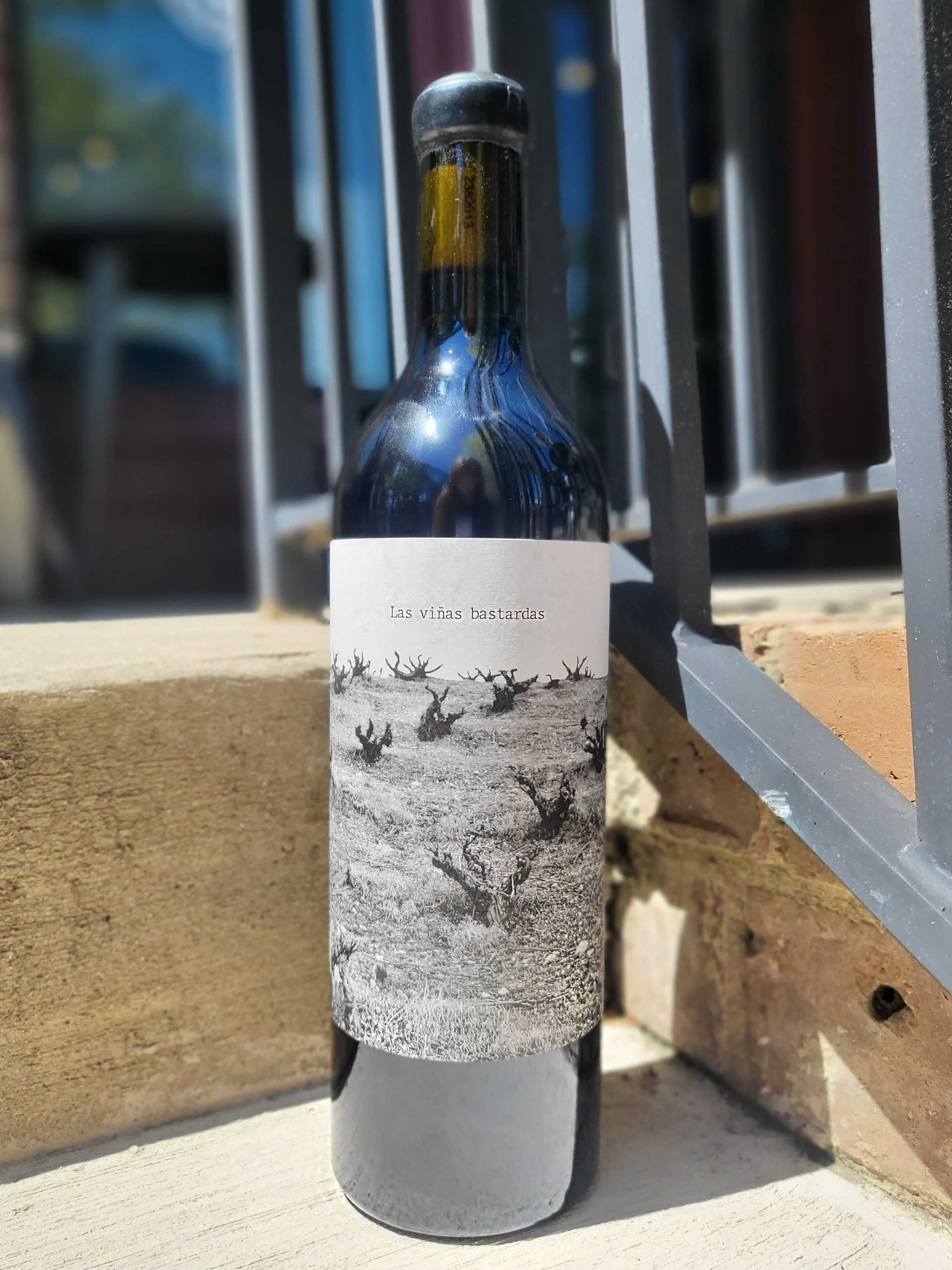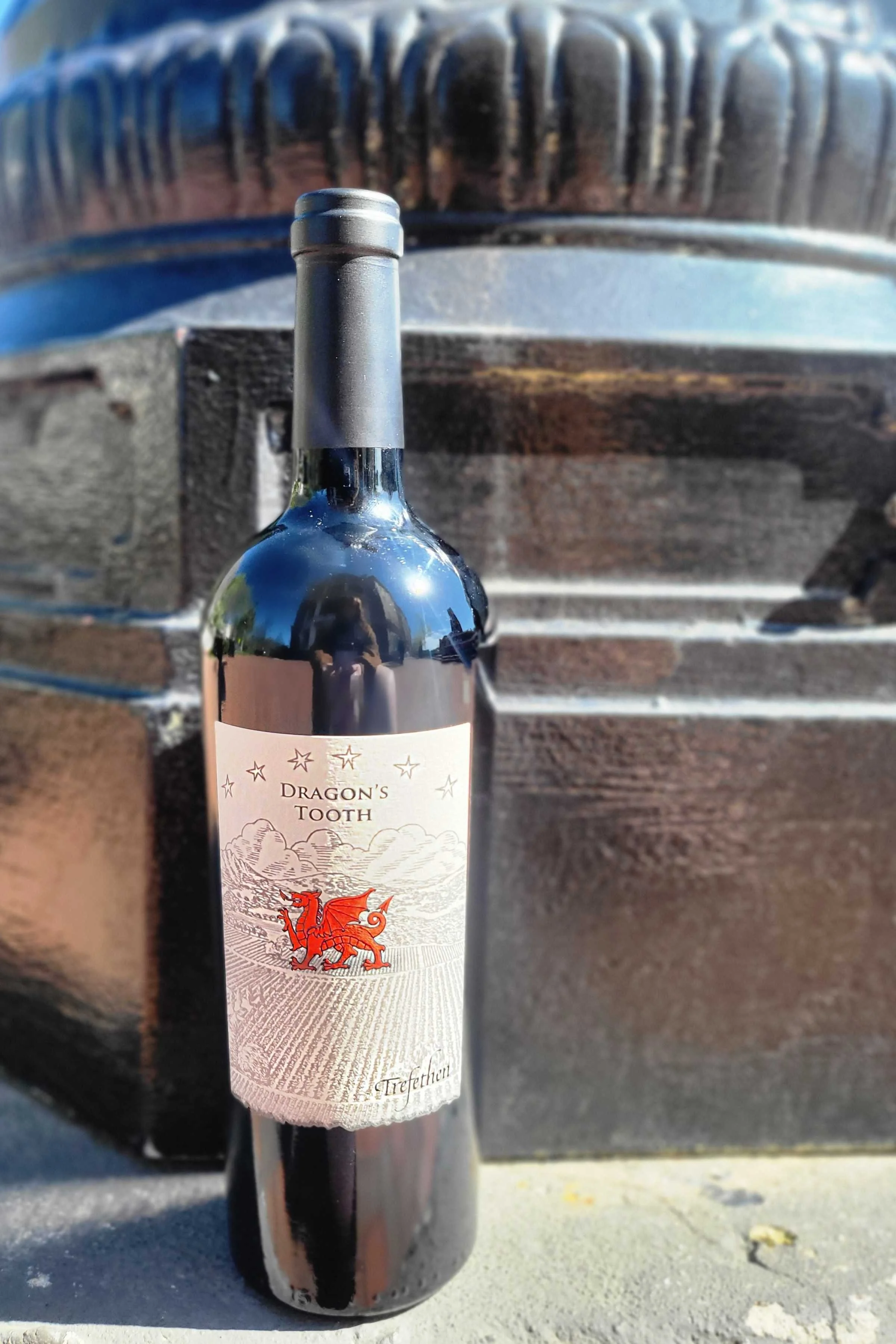UNDERGROUND WINE SOCIETY: april
SCROLL BELOW TO FIND INFORMATION ON YOUR WINES!
The Explorer
$49/month
White/Rosé
Breaking Bread
Muscat Blanc
Grapes: Muscat Blanc (100%)
Region: Dry Creek Valley, California
Wine Notes: “This is the inaugural vintage of a skin-contact white wine for Breaking Bread and is the type of wine that inspired me to start this label. To be able to take risks and play with unique styles of wine and winemaking is the driving force of Breaking Bread. Skin fermented white wines can vary dramatically depending on the varietal used. I have worked with the Timber Crest Muscat Blanc for 10 years, although I have never done a skin contact fermentation with it before. In using this varietal, I knew that the aromatics would be profound, however wanted to ensure that the tannin structure and mouthfeel would be in balance. This fruit was left on skins for a total of ten days. It was destemmed into the fermenter bin with zero sulfur added and we let the native yeast build up a population, which took about five days. From there we allowed it to go another five days fermenting on skins. Keeping the phenolic nature of Muscat Blanc grape skins in mind, I was cautious about how long to leave on skins and am very happy with the result..“
Osmote
Cayuga White Pet Nat
Grapes: Cayuga White
Region: Finger Lakes, NY
Wine Notes: Cayuga White is a French American hybrid developed by Cornell University in the 1940s and is grown almost exclusively within the Finger Lakes region. It is planted on its own roots and grown to a high wire cordon trellis system. The soils are supplemented every year with straw mulch. The combination of grape variety and trellis style on well drained soils allow for sustainable viticulture with a minimum of vineyard sprays. Harvested early season on September 6 for maximum acid retention. Grapes were pressed gently in a horizontal press. The juice was fermented naturally and bottled over two days in October to finish ferment under crown cap and preserve natural carbonation. No sulfites were added at bottling. Bottles disgorged January to March 2022. 702 cases produced.
Poderi Cellario
"il Baffone" Bianco Frizzante
Grapes: Nascetta & Moscato Giallo
Region: Piedmonte, Italy
Wine Notes: The Baffone (means big mustache!) is a blend of nascetta (a rare native Piemontese variety with excellent skins for maceration) and moscato giallo vinified dry. The must was skin contact during primary fermentation (~5 days) in stainless steel before being bottled with conserved passito must to induce secondary fermentation; Cellario makes a small amount of late harvest wine and he uses these dried grapes to kick start the bottle fermentation. No sulfur added and no disgorgement.
Breaking Bread
Zinfandel Rosé
Grapes: Zinfandel (100%)
Region: Dry Creek Valley, California
Wine Notes: “This is the inaugural vintage of a skin-contact white wine for Breaking Bread and is the type of wine that inspired me to start this label. To be able to take risks and play with unique styles of wine and winemaking is the driving force of Breaking Bread. Skin fermented white wines can vary dramatically depending on the varietal used. I have worked with the Timber Crest Muscat Blanc for 10 years, although I have never done a skin contact fermentation with it before. In using this varietal, I knew that the aromatics would be profound, however wanted to ensure that the tannin structure and mouthfeel would be in balance. This fruit was left on skins for a total of ten days. It was destemmed into the fermenter bin with zero sulfur added and we let the native yeast build up a population, which took about five days. From there we allowed it to go another five days fermenting on skins. Keeping the phenolic nature of Muscat Blanc grape skins in mind, I was cautious about how long to leave on skins and am very happy with the result..“
Osmote
Seneca Lake Chardonnay
Grapes: Chardonnay (100%)
Region: Seneca Lake, NY
Wine Notes: A classic chardonnay from vineyards on the west side of Seneca Lake. Planted on steep slopes with alluvial soils full of gravel, these vineyard sites yield grapes with depth and concentration that melds beautifully with oak. Fermented naturally with vineyard yeasts in large format French oak barrels for perfect oak integration.
Casa Rojo
El Gordo del Circo
Grapes: Verdejo (100%)
Region: Rueda, Spain
Wine Notes: Grapes from vineyards of about 30 years old, harvested by hand and on trellis, alternating mechanized and manual harvesting. Gravelly and sandy soils. Grape coming from Olmedo, Valdestillas and Segovia lands, 100% Verdejo. Maceration of the grape at low temperature for 24 hours. Fermentation only of the yolk must at low temperature to extract a large amount of aromatic compounds from the grape. Aging on fhe lees for 5 months, which will give the wine a great roundness in the mouth, and a powerful structure.\
Testalonga
“Keep on Punching”
Grapes: Chenin Blanc (100%)
Region: Swartland, South Africa
Wine Notes: Organic Farming, Hand harvested, 59 year old vines, Unfined and Unfiltered. Fermentation: Whole cluster, direct press, spontaneous fermentation in fourdres and stainless steel, malolactic fermentation. Or
Aging: in foudres and stainless steel
Reds
Canopus
Malbec de Sed
Grapes: Malbec (92%) & Sauvignon Blanc (8%)
Region: Valle de Uco, Argentina
Wine Notes: “Comes from 2 vineyards planted in 2010, with some of the fruit provided by a local/friend grower Javier Martini. After a harvest by hand, the grapes are de-stemmed and left whole berry to ferment in concrete tanks with a short maceration of 7 days. The wine is then raised in concrete and bottled without fining, filtration, and 49 ppm’s of total SO2. production is certified organic with biodynamic certification coming in the near future. In the winery, vinifications are with native yeasts in a variety of vessels depending on the wine. The aging is done in used barrels, foudres and amphorae. Sulfur is only added at bottling and kept below 40 ppm’s in total. No other products are used. Gabriel’s goal is to make coolclimate wines that show precision, purity and depth of flavor.
PoderiCellario Il Giovanotto
Grapes: Brachetto (30&) & Dolcetto (70%)
Region: Piedmonte, Italy
Wine Notes: In the MMXXI (2021) vintage Cellario decided to utilize his small vineyard of Brachetto (just under a hectare), which he vinified into a dry red wine of ~11% abv. He then combined this Brachetto with his beloved Dolcetto to create a roughly 30/70 blend (30% brachetto/70% dolcetto) and vinified it partially whole cluster (semi-carbo). Aged for about a month in cement tanks before bottling and immediate release.
Esencia de Monte Tinto
Grapes: Monastrell (70%) & Tempranillo (30%)
Region: Valencia, Spain
Food Pairing: All kinds of meats, barbecue roasts, rice, pasta.
Wine Notes:Fermentation and malolactic fermentation in concrete tanks with their own indigenous yeasts. Part of the wine ages in French oak barrels for eight months and the rest of the wine is aged for eight months in the concrete tanks themselves. Subsequent smooth filtering before bottling.
CHÂTEAU MARIS
La Touge
Grapes: Syrah (60%), Grenache (35) & Carignan (5%).
Region: AOP Minervois La Livinière, France
Aging Potential : 3-7 years
Wine Notes: “The winding road leading to the plots of Syrah vines located on the terraces at the foot of La Livinière gave its name to this expressive vintage with aromas of black fruits and silky tannins. A singular harmony, with echoes of the surrounding heath. La Touge brings out Life, it is a vintage very representative of biodynamics with a touch of mineral. Vinification is carried out in vats, extraction by breaking the cap and light pumping over for 4 weeks of maceration Aged 16 months in concrete and egg-shaped vats.”
PoderiCellario Duzat
Grapes: Dolcetto (100%)
Region: Piedmonte, Italy
Wine Notes: Hand-harvested into small bins. Spontaneous fermentation with 4 to 8 days maceration. Aged in stainless steel for 7 months and bottle for 3 months. Bottled with minimal sulphur (~10ppm) and without filtering or fining.
Casa
Rojo Enemigo Mio
Grapes: Garnacha (100%)
Region: Murcia, Spain
Wine Notes: Aged during the alcoholic (22 degrees) and malolactic fermentation in the French wood fudres of 11,000 kilos, and later for 4 more months until stabilization prior to bottling. From a single 4-hectare vineyard at the foot of the Sierra de La Pila, just in front of the winery The age of the vineyard is 5 years old and it is 100% property with north orientation and fresh clay soil. Due to the natural vigor of our Garnacha clone, we perform thinning and green pruning in May and June to reduce bunch load on vines.
Breaking Bread
Field Blend
Grapes: Zinfandel, Mourvèdre, Carignan, & Muscat Blanc
Region: North Coast, California
Wine Notes: “This Field Blend was made as a tribute to the heritage of our home in Dry Creek Valley. One hundred years ago in Sonoma County, wines were made with little to no intervention or technology. Our natural winemaking approach is one that emulates the style of wines made by these early vintners. The defining characteristic is whole-cluster fermentation (carbonic maceration). We use all native yeast for spontaneous fermentation, all native bacteria for malolactic fermentation, and add no Sulphur throughout fermentation. Also, in line with the tradition of incorporating white varietals, we chose to co-ferment with Muscat Blanc for a distinct and unmistakable flavor and aromatics.”
Dom. Benastera
La Petite Soeur
Grapes: Lledoner Pelut, Grenache Noir, Syrah & Carignan
Region: PGI Cotes Catalanes, Agly Valley Region, France
Wine Notes: The vines are conducted in goblet with the exception of Syrah
which are pruned in guyot or cord. The entire estate is in Organic Agriculture: No pesticides or chemical fertilizers are used in order to preserve Life (that of the soil, of men, etc.). Manual harvest, Maceration in whole bunches. Fermentation with indigenous yeasts. Aged for 8 months in concrete and stainless steel vats.
Casa Rojo
Las Viñas Bastardas
Grapes: Monastrell, Tempranillo, & Cabernet Sauvignon
Region: Murcia, Spain
Wine Notes: In the highlands of Murcia Region, we grow extraordinary and very old native grapes, that along the years, have been evoluting and being passed from generation to generation, as a heritage. The unique terroir of the area, with poor lime and clay soils, united to a extreme weather conditions and dry agriculture have always provide low productions and high concentration in the fruit. When the “denomination of origen” certification arrived, delimiting geographically those plots that were in and those that were off, following municipal frontiers and leaving many of those amazing vineyards with no calification, no origin, sometimes for a few kilómetros, sometimes for meters. Casa Rojo selected and harvested those vineyards close to our winery, at the limit of the DO, in 2018, making this wine that we would like to introduce you.
The Connoisseur
$98/month
Dettori Bianco
Grapes: Vermentino di Sennori (100%)
Region: Sardegna, Italy
Wine Notes: Soil: Sandy soil with gravel, limestone, sandstone, clay and alluvial deposits Elevation: 250 meters (820 feet) Age of vines: oldest vines up to 40 years old Vinification: Hand-harvest, 6 days skin maceration. Spontaneous fermentation and 3 months aging in cement tanks before bottling. No filtration and no stabilization. Tasting Note: Golden yellow in color, Exotic, notes of citrus, russet apple, honeysuckle, cardamom and wet stone. Silky and weighted on the palate with mineral-tinged orchard fruits and zesty acidity. Multi layered, this wine offers beautiful balance with a long lingering finish. Biodynamic. Demeter certified
Scarbolo Campo del Viotto
Grapes: Merlot (100%)
Region: Friuli, Italy
Wine Notes: The vines prosper in our only cru of Merlot by virtue of both the sharp late summer thermal excursions as well as the soil – heavy with clasts and balanced with limestone and clay. For Merlot, these conditions forge the optimal ripening conditions and an aptitude for long maturations, making this cultivar a superb witness of the profound bond between our terroir and its birthplace in the Gironde.
While so similar, we found that our Merlot benefits from a short period of appassimento, in which clusters are harvested and dry naturally before fermenting – this process, made famous in northeastern Italy, prompts a concentration of tannins and natural sweetness. Following fermentation and a prolonged maceration, the wine matures long enough to develop delightfully complex and profound tertiary aromas, yet never overcoming the varietal expression.
Campo del Viotto embodies the rebel energy of Scarbolo. In a land of whites, we inaugurated our Principles wines with a red. Where our surroundings were classified as quantity-driven, we initiated our project highlighting a different vision.
Trefethen
Dragon’s Tooth
Grapes: Malbec (49%), Petit Verdot (27%). Cabernet Sauvignon (24%)
Region: Napa Valley, California
Food Pairing: Mushroom Pasta
Wine Notes: Ample rainfall in the spring recharged the soil profile and provided a strong start to the growing season. The weather during the summer featured consistent warmth and sunshine without any major heat spells. Cooler than average temperatures in August and September slowed the ripening process, providing long hang time and leading to complex flavor development. October was mostly dry and warmer than usual allowing us to pick each block at optimal ripeness. The harvest was complete before November and the start of an epic rainy season.
Keenan Merlot 2018
Grapes: Merlot (100%)
Region: Napa Valley, California
Wine Notes:The 2018 Keenan Merlot is composed of seventy-six percent Keenan Estate Merlot. Twenty-four percent of the wine is Merlot fruit harvested from the Napa Carneros region. After hand harvesting, the grapes were de-stemmed, then inoculated with Montrachet yeast. Fermentation ranged from ten to fourteen days.
The ‘18 Merlot has been aged in thirty-three percent new French and American oak barrels for eighteen months. The resulting wine shows intense aromas of black cherry, blackberry, and cassis. Complex nuances of cocoa and coffee bean emerge as the wine opens up. This is a “big” Merlot that will age for many years to come.


